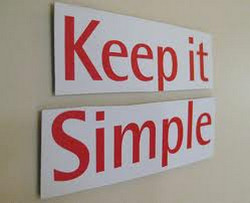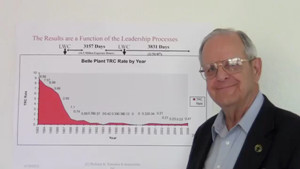 In many of our newsletters, I have talked about helping organizations co-create their safety future using the Process Enneagram© complexity tool in our Partner-Centered Safety Leadership Workshops. This is a powerful tool to help bring the people together around their safety challenges – breaking the old patterns, and co-creating a better, safer future (together).
In many of our newsletters, I have talked about helping organizations co-create their safety future using the Process Enneagram© complexity tool in our Partner-Centered Safety Leadership Workshops. This is a powerful tool to help bring the people together around their safety challenges – breaking the old patterns, and co-creating a better, safer future (together).
Here is a brief description about how our Partner-Centered Safety Leadership Workshop takes place:
In a recent workshop, a cross-section of the people, including their manager, came together for a day. There were about 19 people present. We began with the question, “How do we improve our safety performance?” With this as our central focus, we engaged the people with the Process Enneagram©. Everyone participated in developing their living, strategic safety plan over the next four hours in an interactive dialogue in which everyone participated, including delving into the issues and behavioral patterns that keep recurring.
Together, the group determined what new commitments needed to be made (by all of the team) in order to get where they wanted to be, together – to achieve the best results for a safe workplace.
We then asked the people to identify what the top four things were that they needed to immediately work on and develop a plan of action. Then, they self-organized into four teams of about equal size to work on their respective topic. After about two hours, each team reported out to the entire workshop group, sharing their ideas and plans to improve safety and to solve their problem. They identified their leader, the team members, their plan of action and when they would be meeting again to do their work.
After the workshop, the participants shared what had happened with all the others in the organization who had not attended, asking for ideas for improvement.
In order to sustain this work, their manager needed to talk with all of them frequently about the progress of their teams. The manager supported each team with the resources and contacts they needed to do their work. About once a month, all the teams came together and reviewed their progress with each of the other teams and the manager. Open communications with the rest of the organization kept everyone informed of the progress.
The manager talked with everyone in the organization about their Safety Strategic Plan, sharing information abundantly, listening carefully, and building credibility. He/she also spent time with each team to understand their work. The manager often helped the teams to contact others in the organization or suppliers so they could make progress. The manager created the environment of open communications and trust to make all this happen and to sustain the work.
When Claire and I returned to this organization after about four months, each team met with us to discuss their progress, frustrations and successes. Every team had made progress and everyone was talking about how to help the organization improve. Several teams had completed their initial project and had begun to work on the next piece of work to help the organization get stronger and safer. Almost everyone in the organization was talking about ways to help to improve the organization’s safety performance. Clearly, the organization had markedly improved, moving forward to a better, safer workplace for everyone. And they co-created that future (together).
Discover how your organization can see safety turnarounds quickly. For more information, contact us at 716-622-6467.
 Things do not have to be this way! Most of the people know that this is counter-productive but that is the way it is. However, when we engage the people from across the organization in the Complexity Leadership Process, guiding them in a purposeful conversation of discovery that changes everything, they find it does not have to be that way!
Things do not have to be this way! Most of the people know that this is counter-productive but that is the way it is. However, when we engage the people from across the organization in the Complexity Leadership Process, guiding them in a purposeful conversation of discovery that changes everything, they find it does not have to be that way!
 Most of the safety people I’ve come to know approach organizations as if they are mechanical things to manipulate. Organizations are structured in functions. Knowledge is structured in pieces. People are narrowly skilled. Motivation is based on external factors. Information is shared on a need to know basis. Change is a troubling problem. People work in prescribed roles seeing only their part of the work. If change is needed people are moved around like chairs. Training is provided in abundance. Safety programs are set up as step-by-step processes where things are arranged in a prescribed sequence.
Most of the safety people I’ve come to know approach organizations as if they are mechanical things to manipulate. Organizations are structured in functions. Knowledge is structured in pieces. People are narrowly skilled. Motivation is based on external factors. Information is shared on a need to know basis. Change is a troubling problem. People work in prescribed roles seeing only their part of the work. If change is needed people are moved around like chairs. Training is provided in abundance. Safety programs are set up as step-by-step processes where things are arranged in a prescribed sequence. 




